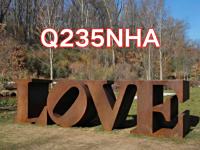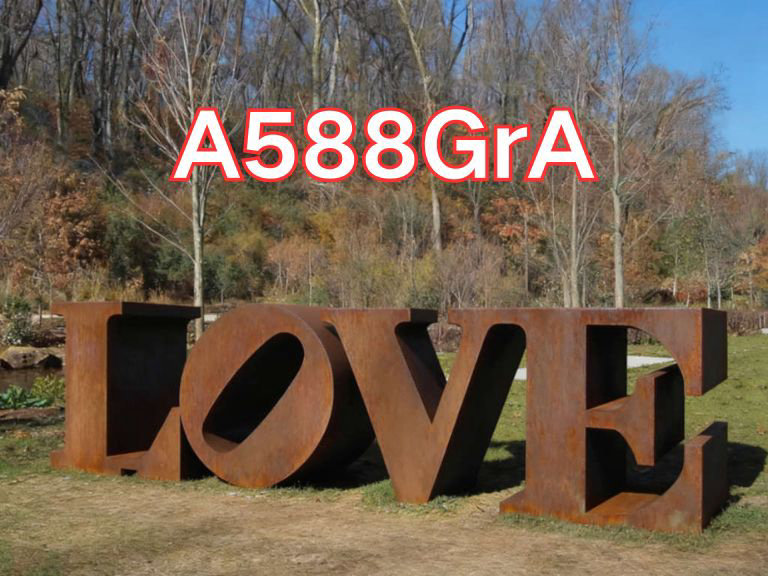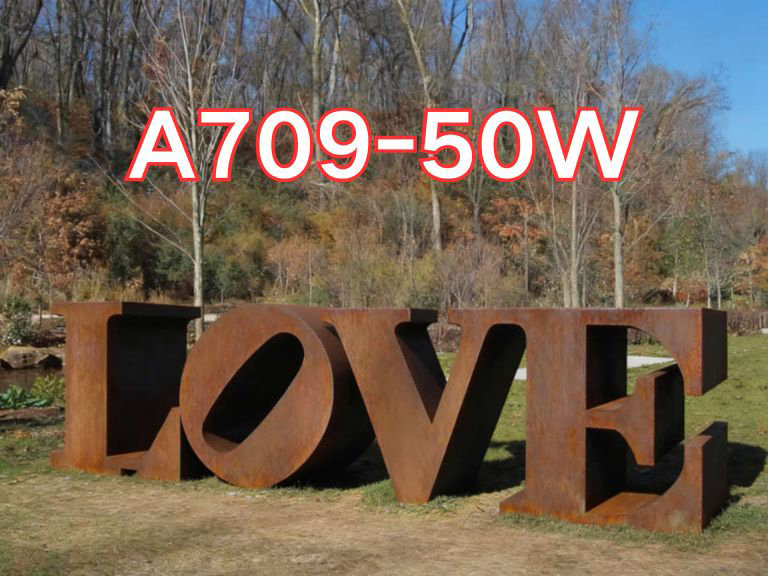

Q235NHA
Q235NHA is a high-strength weathering structural steel with excellent atmospheric corrosion resistance and weldability. With a minimum yield strength of ≥235 MPa, it is suitable for building, bridge, and engineering machinery structures exposed to outdoor environments. It can be used without painting, significantly reducing maintenance costs.
Grade Designation Explanation
Q: Stands for "Qu" (Chinese pinyin for "yield"), indicating yield strength;
235: Minimum specified yield strength of 235 MPa (for thickness ≤16 mm);
NH: Abbreviation for "Nai Hou" , meaning weather-resistant, indicating enhanced atmospheric corrosion resistance;
A: Quality grade A, indicating no impact toughness requirement (supplied at ambient temperature), with lower P and S content, suitable for general structural applications.
Physical Properties
Density: 7.85 g/cm³
Elastic Modulus: ~206 GPa
Thermal Expansion Coefficient: ~11.7×10⁻⁶/°C (20–100°C)
Thermal Conductivity: ~52 W/(m·K)
Yield Strength (ReH): ≥235 MPa (for thickness ≤16 mm)
Tensile Strength (Rm): 360–510 MPa
Elongation after Fracture (A): ≥26% (Lo=50mm, thickness ≤16 mm)
Elongation vs. Thickness: ≥25% for 16–40 mm; ≥24% for 40–60 mm
Corrosion Resistance: In industrial and marine atmospheres, its corrosion resistance is 2–3 times that of ordinary carbon steel. It forms a stable, dense rust layer (enriched with Cu, Cr, Ni, etc.), effectively inhibiting further corrosion.
Chemical Composition
Q235NHA enhances weather resistance by adding small amounts of alloying elements while controlling carbon equivalent for good weldability:
| Element | Content (wt%) | Function |
|---|---|---|
| C | ≤0.21% | Limits carbon equivalent to ensure weldability |
| Si | 0.20–0.50% | Increases strength and participates in protective rust layer formation |
| Mn | ≤0.90% | Enhances strength and toughness |
| P | 0.07–0.15% | Improves weather resistance (forms dense phosphate layer); controlled to avoid embrittlement |
| S | ≤0.035% | Harmful impurity, strictly limited |
| Cu | 0.25–0.50% | Key weathering element, promotes stable rust layer |
| Cr | 0.30–0.60% | Enhances corrosion resistance, synergistic with Cu |
| Ni | ≤0.30% | Improves toughness and corrosion resistance |
| Nb/V/Ti | ≤0.11% (total) | Microalloying for grain refinement and improved strength-toughness balance |
Note: The synergistic effect of P, Cu, and Cr is crucial for weather resistance. The resulting rust layer is dense and low in electrical conductivity, significantly slowing down electrochemical corrosion.
Application Areas
Q235NHA is widely used in structural components exposed to atmospheric environments, especially where painting or frequent maintenance is undesirable:
Building Structures: Exposed steel frames, curtain wall supports, canopies, staircases;
Bridge Engineering: Main girders and trusses for railway, highway, and pedestrian bridges;
Transportation Infrastructure: Signal towers, noise barriers, guardrails, street light poles;
Construction Machinery: Containers, mining trucks, conveyor enclosures;
Power & Telecommunications: Transmission towers, communication base station supports;
Landscape & Art Installations: Outdoor sculptures, decorative fences, cultural walls.
Testing and Manufacturing Methods
Production Process:
Steelmaking: Converter or electric arc furnace, followed by LF refining to control inclusions and gases;
Continuous Casting: High-purity billet production;
Heating: Uniform heating in soaking furnace to 1150–1250°C;
Rolling: Conventional hot rolling or controlled rolling for uniform microstructure;
Cooling: Air cooling to avoid temper brittleness;
Inspection:
Mechanical Testing: Tensile and bend tests;
Chemical Analysis: Spectrometry to verify key elements (Cu, Cr, P);
Weathering Evaluation: Accelerated corrosion tests (e.g., CORTEN test) or atmospheric exposure tests to assess rust layer stability;
Weldability Testing: Welding Procedure Qualification (WPQ) as required by project specifications.
Equivalent or Similar Grades in ASTM, JIS, and EN Standards
| Standard System | Equivalent/Similar Grade | Notes |
|---|---|---|
| American (ASTM) | ASTM A588 Gr.A/B | High-strength low-alloy weathering steel, yield ≥345 MPa. Higher strength than Q235NHA but similar weathering mechanism (Cu-Cr-P system). Used in bridges and buildings. |
| Japanese (JIS) | SMA490AW, SMA490BW | Yield ≥325 MPa, excellent weather resistance, commonly used in bridges and buildings. Higher strength than Q235NHA. |
| European (EN) | S355J0W, S355K2W | EN 10025-5 weathering steels, yield ≥355 MPa, contain Cr, Ni, Cu. Good corrosion resistance but higher strength. No direct equivalent. |
Note: Q235NHA belongs to the medium-low strength weathering steel category. International standards primarily define high-strength weathering steels (e.g., A588, S355W series), so there is no exact equivalent. It is functionally similar to ASTM A242 Type 1 (early weathering steel, strength ~275–350 MPa), but Q235NHA has lower strength and is suited for lightweight structures.
Q235NHA was first introduced in the Chinese national standard GB/T 4171-2008 Weathering Structural Steels.
Published in 2008, this standard replaced the earlier GB/T 4171-1992 and systematically established a grade system for high-strength, weldable weathering steels, including Q235NH, Q295NH, Q355NH, and Q460NH. Q235NHA was formally included as a low-strength weathering steel grade.
Thus, the standardization of Q235NHA began with GB/T 4171-2008, marking it as a domestically developed Chinese steel grade now widely used in national infrastructure projects.

Ultrasonic Testing (UT)
A key non-destructive testing technique that uses high-frequency sound waves to detect internal flaws in steel plates. The probe emits sound waves, which reflect when encountering defects such as cracks or inclusions. The receiver captures the echoes, enabling precise determination of defect location and size. With high sensitivity, strong penetration, and fast inspection speed, UT effectively ensures internal quality, widely used in the production of heavy plates, pressure vessel plates, and other high-end products to guarantee safety and reliability.

Magnetic Particle Testing (MT)
A common surface inspection method that magnetizes the workpiece, causing leakage magnetic fields at surface or near-surface defects like cracks or inclusions, which attract magnetic particles to form visible indications. Simple to operate and highly sensitive, MT is suitable for rapid inspection of surface and near-surface flaws in ferromagnetic materials, widely used for online or offline inspection of plate edges, ends, and welds, ensuring product quality and safety.

Penetrant Testing (PT)
A non-destructive method for detecting surface-breaking flaws. A penetrant liquid is applied to the cleaned steel surface, allowing it to seep into defects such as cracks or pores. After removing excess penetrant, a developer is applied, causing the trapped penetrant to bleed out and form visible indications. Simple and cost-effective, PT is suitable for inspecting surface defects in various non-porous materials, commonly used for welds, castings, and complex components, effectively ensuring surface quality of steel plates.











